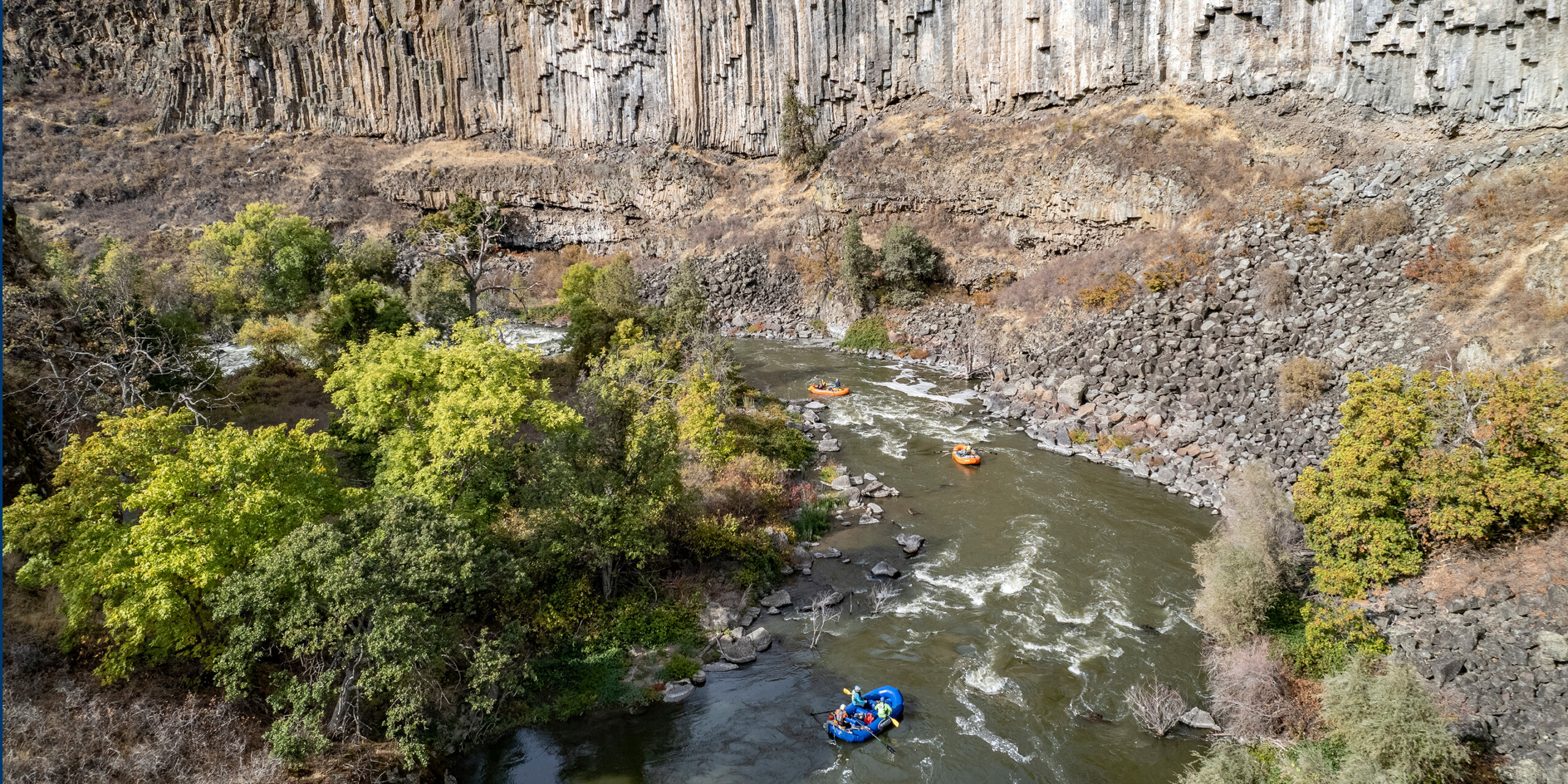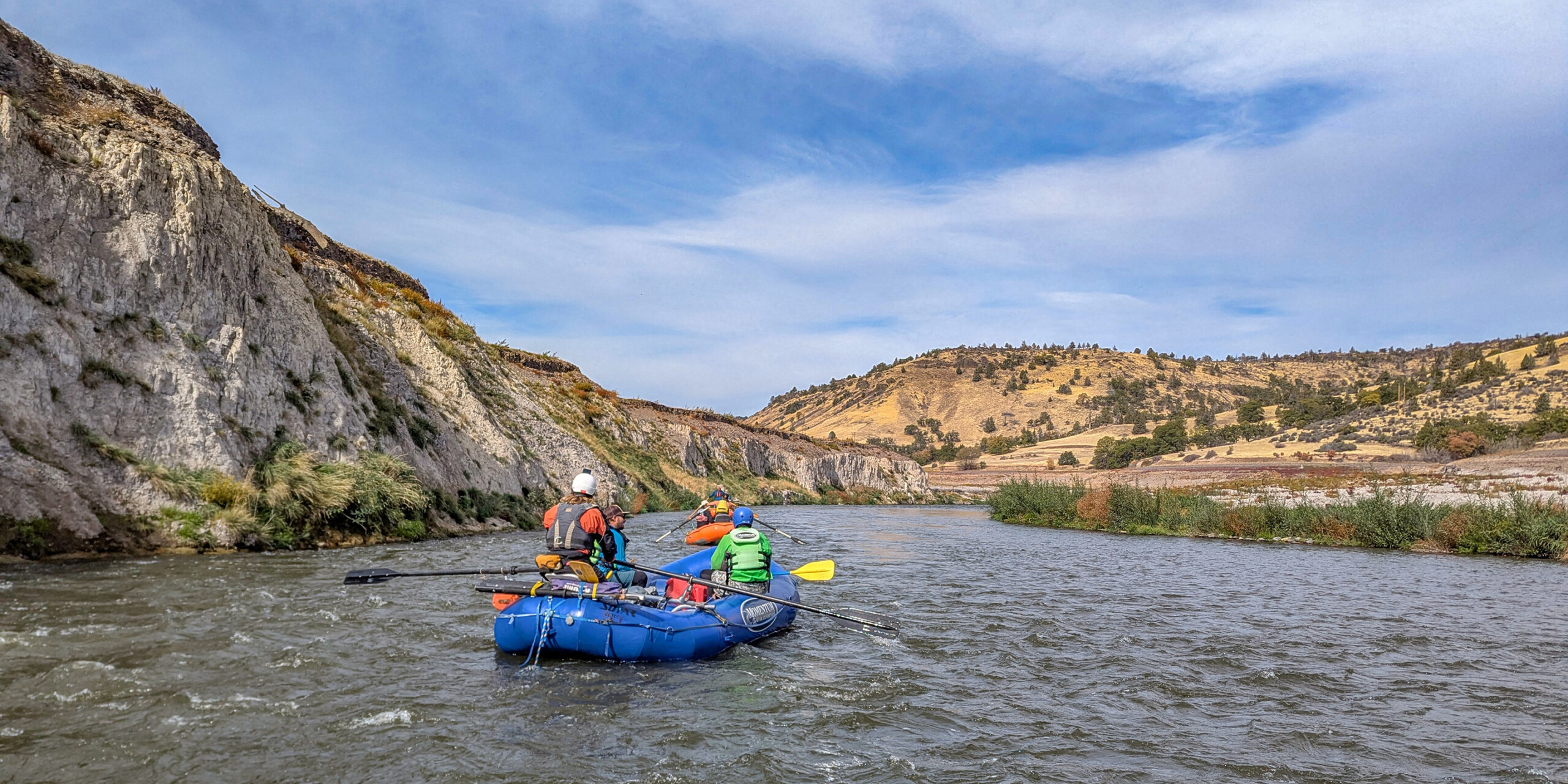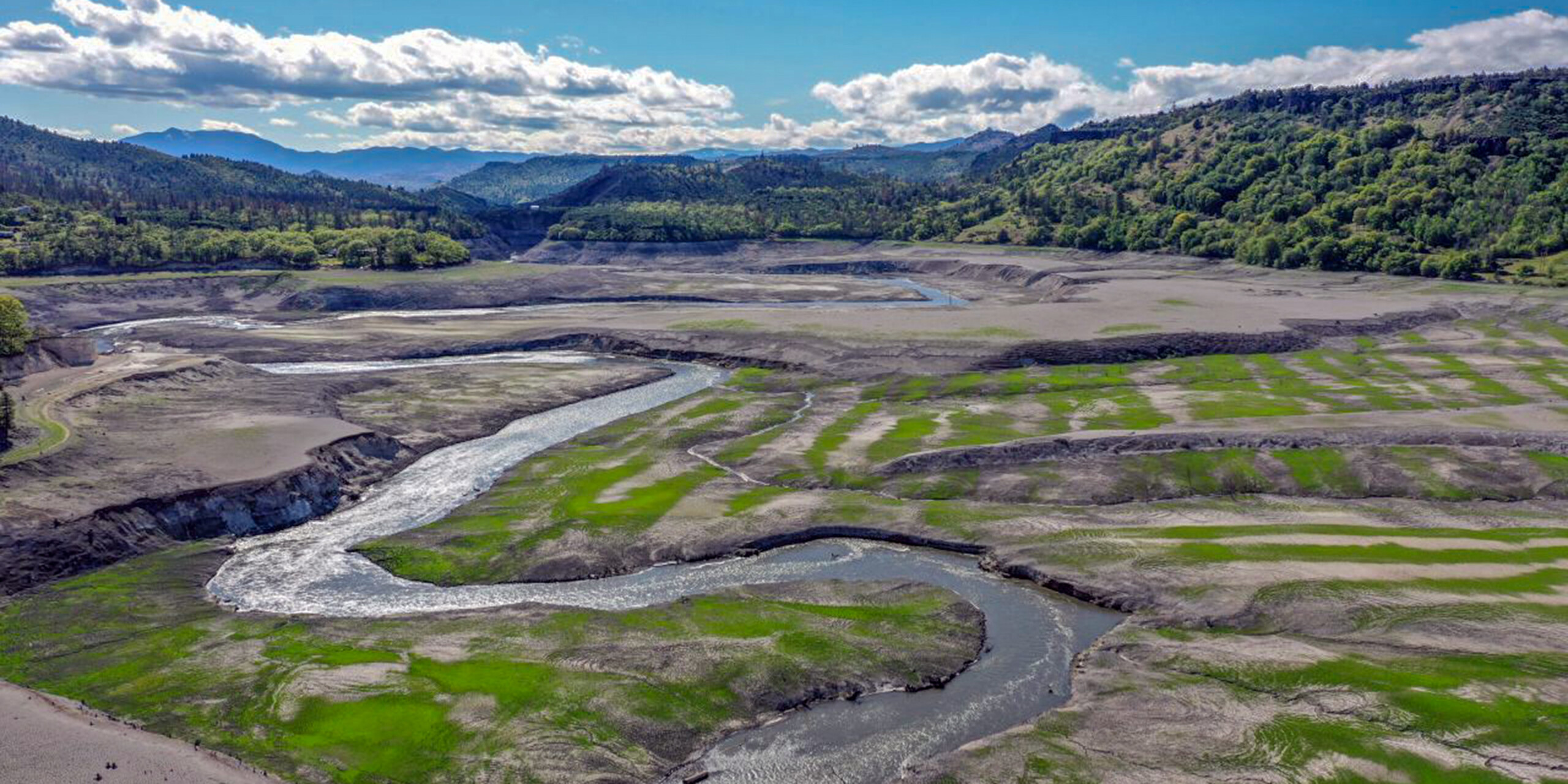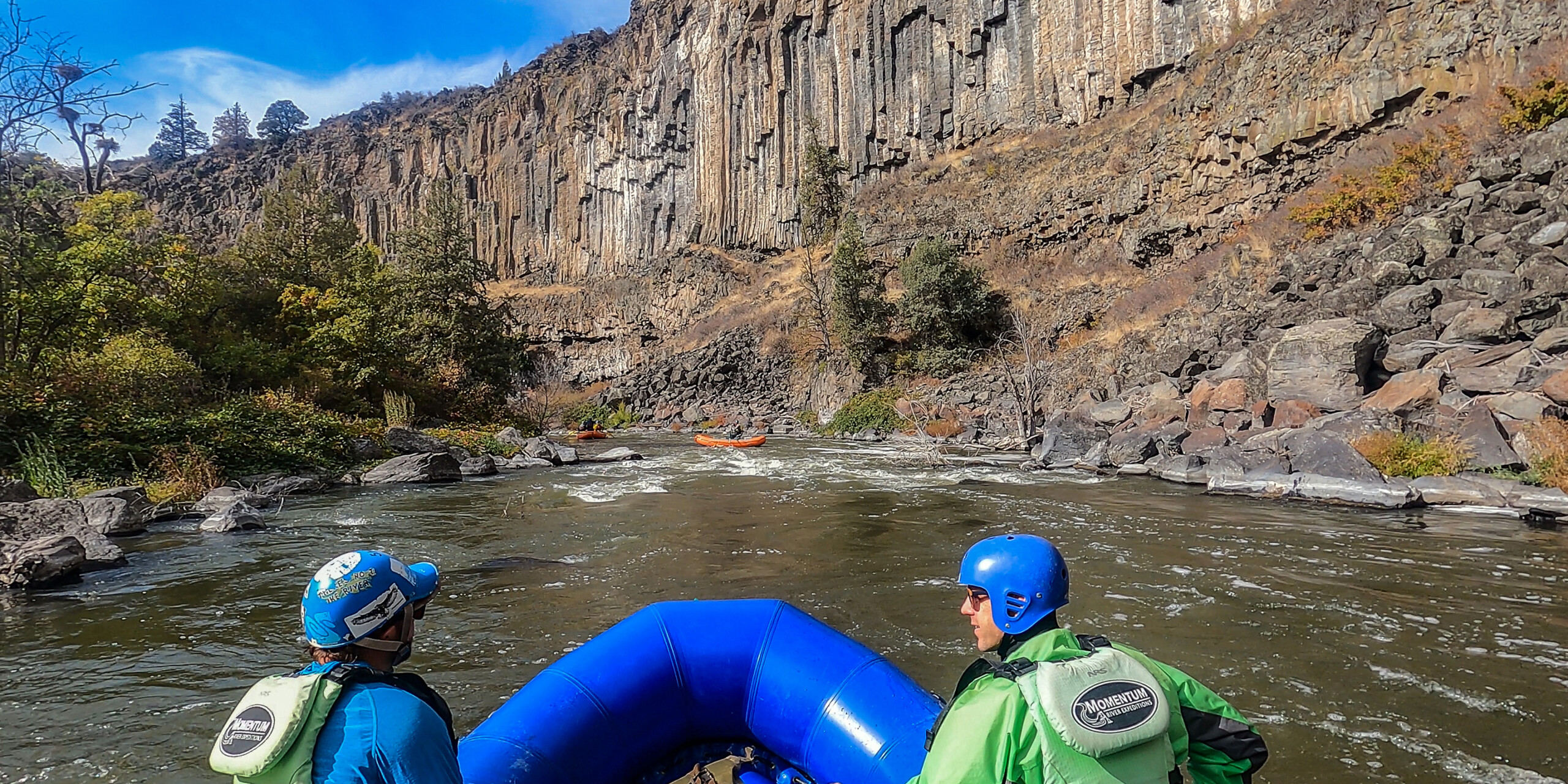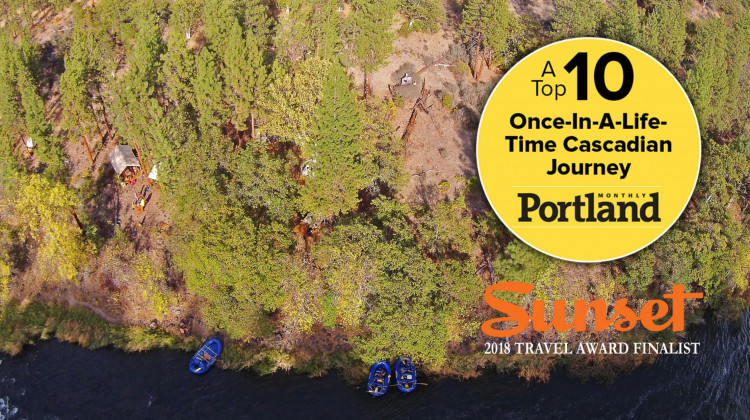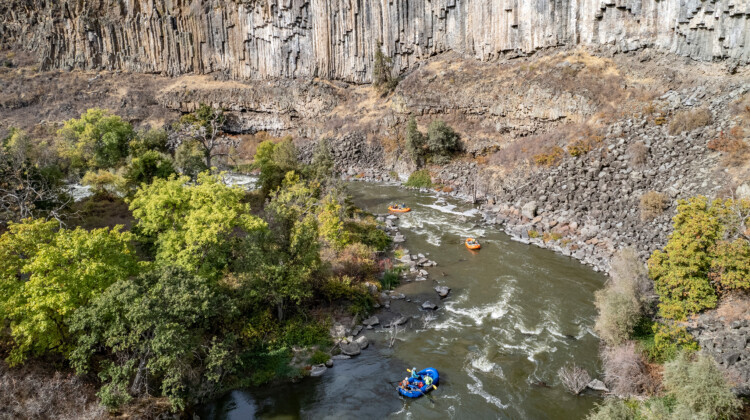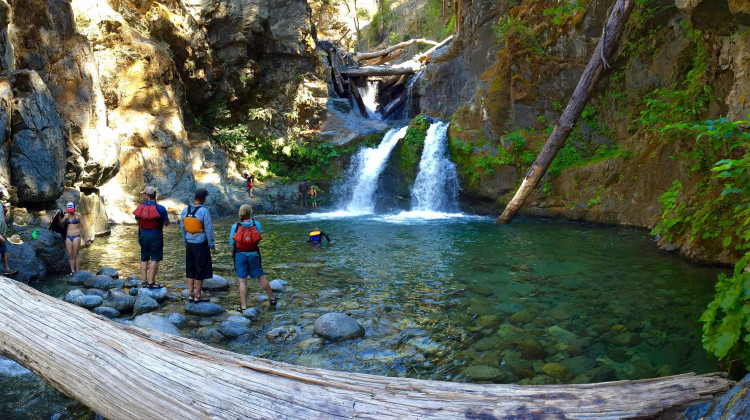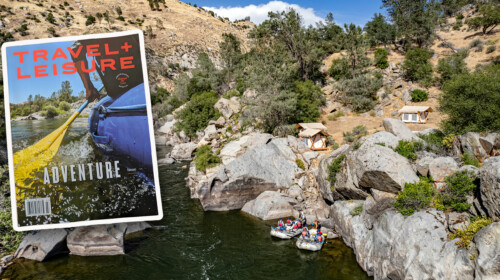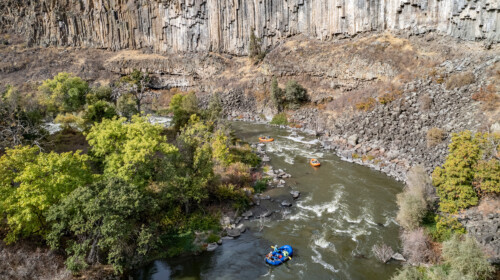Rafting The Klamath River After The Dams
Join us in exploring the Upper Klamath River post dam removalIn 2024 four dams were removed from the Klamath River – the largest dam removal in history. The Klamath River now runs free from Keno to the Ocean – with 44 miles of reservoirs, diversions, and sections trapped in between once again a free flowing river. Even for someone who has planned for this and studied maps and geology to understand how it would look, it is still hard to put words to and even shocking to see. It is so, so beautiful to see how quickly a river renews and recovers – especially with a little help. And to see, only months after the final dam was removed, Salmon swimming upstream.
More Info About Klamath Dam Removal
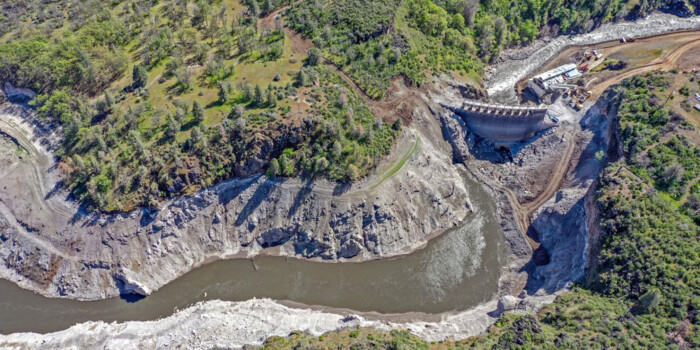
Copco 1 dam as it was being removed
- An AMAZING before and after dam removal video on OBP
- A BBC article that highlights the MASSIVE job the tribes and ecologists did with restoration and re-planting. The combination of that effort and the river’s effort is incredible to see.
- NYT: With Dams Removed, Salmon Will Have the Run of a Western River – a good overview and has the views and fears of some on both sides (and the Salmon have returned! We saw some on our very first floats)
- The website for the Shasta Indian Nation – Kickasaeki Valley and Canyon are being returned to them.
- The ‘Post Dam’ River map created many years before dam removal by American Whitewater and UKOA to show how the river could be from a recreation standpoint after the dams.
- Klamath Dam Removal Chronology by American Whitewater
- Statesman Journal: Last Ride in Hells Corner: Rafters savor final season on Upper Klamath before dam removal
- The Statesman Journal Podcast about the last season before dam removal.
- Salmon Returning to the Klamath – The Statesman Journal
We have always believed in protecting the places we love – by sharing them and emotionally connecting people to them. And we are so excited for this next chapter of the Klamath, to show people the restored river and how quickly a river heals, and to be just a tiny part of a large-scale environmental project that is on its way to being good for rivers, good for fish, and good for the local communities that depend on the river economically and culturally.
Below you can check out our new trips on the Upper Klamath >>
While it took only one year to physically remove the dams, it took over 20 years of hard work and political effort to get there. In 2002 there was a massive fish kill on the Klamath – over 70,000 adult salmon died – an environmental, economic, and cultural disaster. Soon after, Tribal members gathered to begin pushing for a solution. After years of back and forth and failed congressional action, stakeholders came together with Pacific Power in 2016 and created the Klamath Hydroelectric Settlement Agreement (KHSA) as a path to removing the dams. Eight years and many messy democratic moments later, it finally happened.
Dams and river runners have never been friends. For the most part, dams simply mean rivers lost and canyons flooded. From the BioBio in Chile, to the Marsyangdi in Nepal, to the Stanislaus in California, to huge sections of the Snake in Idaho and Oregon. For river runners, they all represent the loss of powerful wild rivers, incredible river trips, and amazing ways to get outside.
The ‘Hells Corner’ stretch of the Upper Klamath was one of the few places where there were some benefits to river runners in the way the dams were operated. It has been rafted by outfitters since 1979 and its big water summer flows, made possible by the dams, made it one of the West’s best and most unique ways to get people out on river. It also became a big economic driver in the region.
The Klamath Hydroelectric Settlement Agreement (KHSA) envisioned a restored river and project land that is “managed for public interest purposes such as fish and wildlife habitat restoration and enhancement, public education, and public recreational access.” Despite the loss of a big water summer run, an entire year where we could not run the Upper Klamath at all, and the change and uncertainty involved in such a huge undertaking, Outfitters joined together and supported dam removal and the vision of the KHSA. And outfitters believed that, if done correctly, it would not only lead to a healthier Klamath River system, but could also serve as a model for future large scale restoration projects by being a win for river health, fish, and local communities that depend on rivers culturally and economically.
These were big goals – for everyone involved. And reaching them wasn’t easy: Democracy and change are messy, and many times things move very, very slowly. But when people get together – even if they disagree (sometimes stridently) – good things can happen. And, while there are still hurdles left to clear, through all of this we think that this project is getting very close to the vision of the KHSA.
And, although our part in this project was extremely small, outfitters of all types do provide a vital role in protecting rivers and wild areas. We introduce a wide range of people to the outdoors. Creating a broader and more educated public that understands and appreciates our natural areas and rivers and the importance of their protection. And Outfitters and whitewater recreationists were pivotal in the 1980’s in the fight to protect the Upper Klamath from even more dams and ultimately in getting its Wild and Scenic designation. Without a wide range of people who love the outdoors, and the help of outfitters around the county in building that coalition, it is harder to reach the political mass to make these types of changes.
So, for anyone who loves wild rivers and sustainable and thriving local communities, there are some HUGE thanks to give:
- The coalition of Tribes – including the Yurok and Karuk, commercial fishing groups, environmental groups, and activists that got the ball rolling and then just kept pushing it year after year – many times uphill. We can’t imagine how difficult that was.
- The Endangered Species Act (Nixon!?!) – it is difficult to imagine this happening without it.
- The Klamath River Renewal Corporation (KRRC): They were charged with actually removing the dams. As well as being yelled out by almost everyone (including us sometimes:)).
- FERC – The Federal Energy Regulatory Commission: For refereeing a difficult process.
- The BLM, National Park Service, and other California and Oregon agencies.
- Our state and local representatives who quietly stepped in and helped when things got messy (get to know your reps! Most of them are very good people who just want to help).
- And from river runners in particular – A HUGE THANKS to ALL at American Whitewater – and Tom O’Keefe and Bill Cross (the Legend!) in particular. Their leadership and vision was critical to getting recreational access. And their familiarity and involvement with past dam removals lead to better overall restoration in the corridor.
We are missing so many – this was a massive project and it defined the saying ‘it takes a village’. But eventually there will be many amazing stories that will cover the full breadth of the undertaking.
We are so excited to work with the Shasta Nation, BLM, the states, and other groups to do what we do best – introduce and show people the Klamath River and let people see how quickly a river heals. It is a truly amazing thing to witness. And we are excited to be just a tiny part of a large-scale environmental project that is on its way to being a model for future efforts to restore river systems in a way that is a win for river health and local communities.
Join us in exploring the Upper Klamath River post dam removal.
Trips On Upper Klamath River Post Dam Removal
-
Steep, technical whitewater, an award winning ultra-comfortable ‘safari style’ backcountry camp (think glamping), & the most beautiful and exciting sections of the Upper Klamath after the historic dam removals. An action packed and comfortable luxury camping trip - combining the ‘old’ with the ‘new’ for one of the most unique trips in the U.S. learn more
-
Upper Klamath Day Trips
1 Day | April - Oct | Class II to IV+ | Gateway: Ashland / Medford Oregon (MFR)Join us on the newly restored Upper Klamath River after the historic dam removals. We offer high adventure day trips as well as a more mellow scenic day trip. Including a trip down the newly freed Kikaceki Canyon - one most imposing and visually stunning canyons on the West. learn more -
Lower Klamath River Rafting
3 days (1 to 4 day charter options) | April - Early August | Class III+ | Gateway: Ashland, OR / Northern CAThe Wild and Scenic Lower Klamath River is the second largest river in California and offers fun splashy rapids, spectacular mountain scenery, beautiful side hikes, warm water, and a staggering amount of wildlife. Its flexible logistics make it a favorite for custom group and family trips ranging from high adventure seekers to youth and school groups. learn more
-
Our Kern River Rafting Safari was featured in Travel and Leisure
“after drifting 10 miles down the Kern, we arrived at Momentum’s base camp. An enclave of safari-style tents set atop wooden platforms—inside two of which, as if by magic, our luggage awaited—the experience was like being shipwrecked in a place you never want to be rescued from.” Our Kern... learn more
-
Rafting The Klamath River After The Dams
In 2024 four dams were removed from the Klamath River – the largest dam removal in history. The Klamath River now runs free from Keno to the Ocean. Find out more & Join us in exploring the Klamath River post dam removal.
- The Momentum Blog

